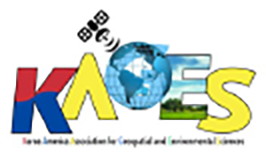Abstract
This research contributes an educational research perspective to teaching and learning with geospatial technologies. This work considers the literacy of a geospatial text that is readily accessible to students, but often assumed to be intuitive to read– dynamic scalable satellite imagery, which often serves as base maps for common navigation, GIS, and virtual globe applications. Within the context of a STEM project, Grades 5 and 6 students were observed and interviewed to identify knowledge and skills that were required to make meaning of Google Earth imagery. A qualitative methodological approach incorporating a thinkaloud data collection protocol was followed to stay true to the breadth, depth and nuances of the student voice and experience. When engaged with Google Earth, the students were observed to employ a range of image interpretation skills, demonstrated various expertise in navigation, and also drew upon their knowledge of the technology. Challenges to understanding the imagery included dominant alignment effect, dimensional translation, and interpreting the nadir view. Students who had an understanding of the underlying technology of the application were better able to overcome these challenges. These results suggest that ensuring students have knowledge about the technology itself, and basic literacy of satellite imagery, is valuable in order to make meaning of the data, critical at this age when students are developing their mental constructs of the world with such geospatial data.
Recommended Citation
Moorman, Lynn A. and Crichton, Susan
(2018)
"Learner Requirements and Geospatial Literacy Challenges for Making Meaning with Google Earth,"
International Journal of Geospatial and Environmental Research: Vol. 5:
No.
3, Article 5.
Available at:
https://dc.uwm.edu/ijger/vol5/iss3/5
Included in
Curriculum and Instruction Commons, Earth Sciences Commons, Elementary Education Commons, Environmental Sciences Commons, Remote Sensing Commons

